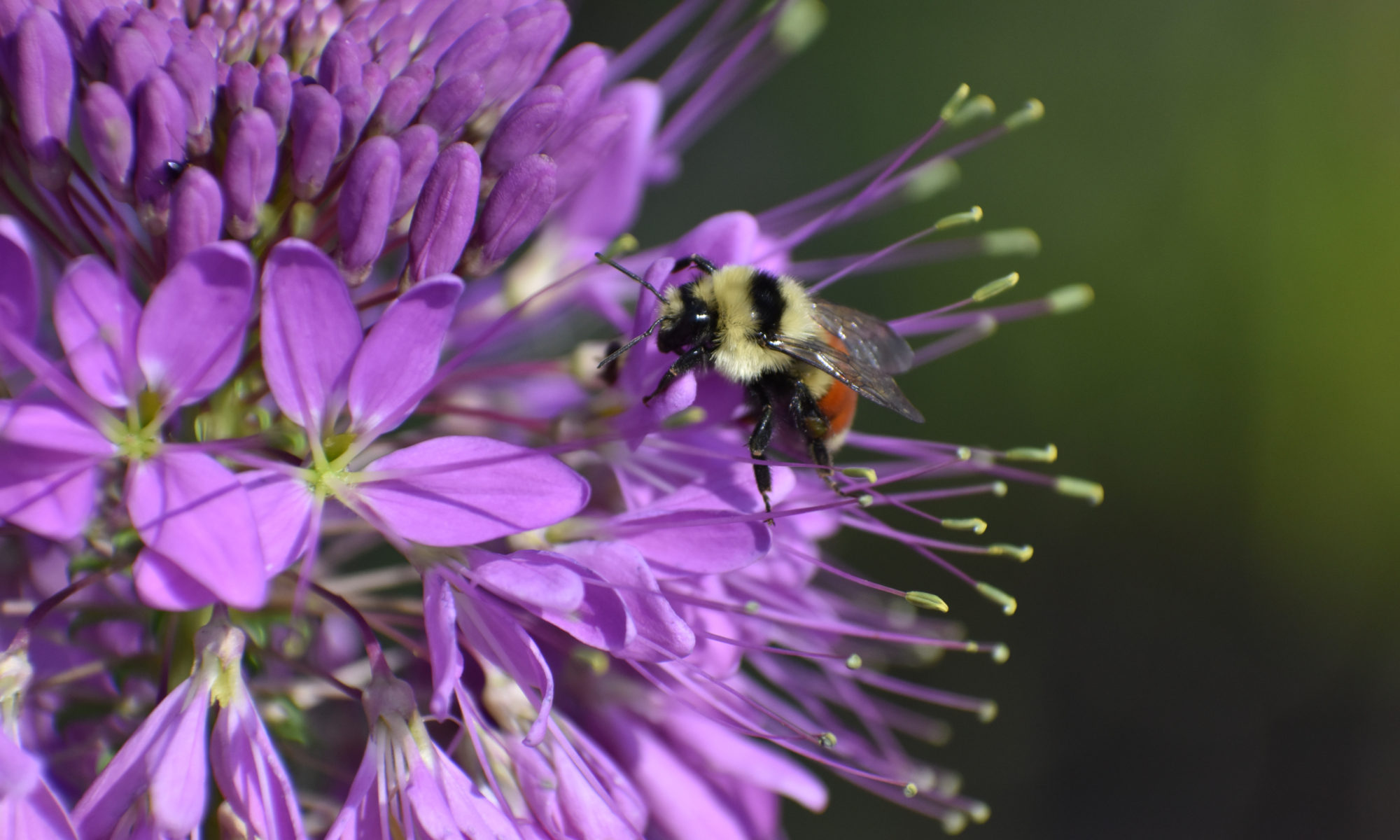The individual decisions that social bees make while foraging have important implications for bee health and plant fitness. I have focused on understanding how bees make decisions about foraging for complex resources, and how they balance individual and colony needs.
Foraging bees are faced with a cognitively complex task: toefficiently collect multiple resources simultaneously (pollen, nectar, water, etc). In some plant species multiple resources are found on a single flower (e.g. both pollen and nectar), while other species may only have a single reward available (e.g. nectarless plants). As part of my dissertation I explored how bumblebees manage the collection of pollen and nectar, and how variation in colony need and floral rewards shapes bee foraging decisions.
For these projects I constructed artificial flowers where I can independently manipulate pollen and nectar rewards. I then allowed captive reared Bombus impatiens to forage on arrays of these flowers. This experimental framework gives total control over bees’ previous foraging experience and floral display.
In a study published in Behavioral Ecology, we found that Eastern Bumblebees (Bombus impatiens), responded to both the types of rewards flowers offered and colony need. When flowers had very high nectar rewards, bees collected pollen similarly to foragers from pollen starved colonies, rather than switching to the more profitable reward.
If you would like to talk in detail about these behavioral methods or our findings please contact me.
Bee Foraging Publications:
- Francis JS, Muth F, Papaj DR, Leonard AS. 2016. Nutritional complexity and the structure of bee foraging bouts. Behavioral Ecology. 27(3).
- Leonard AS, Francis JS. 2017. Plant-animal communication: past, present and future. Evolutionary Ecology. DOI:10.1007/s10682-017-9884-5.
